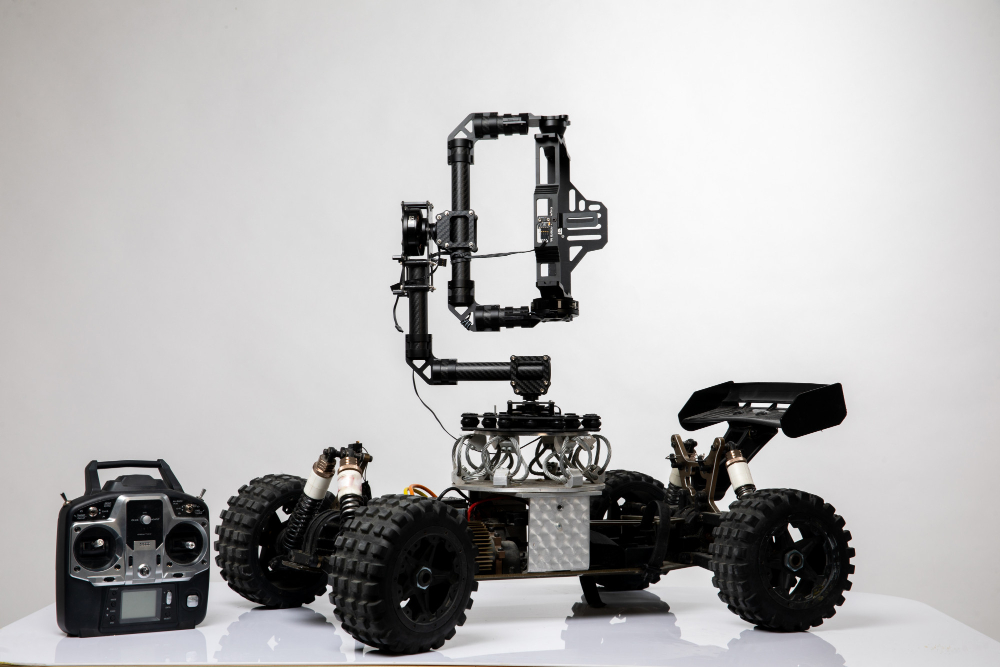Are you the proud owner of a 12V 100Ah deep cycle battery? If so, you’re likely aware of its impressive capabilities. Whether it powers your RV, boat, or solar setup, this battery can be the heartbeat of your adventures. But like any vital component, it requires care to ensure longevity and peak performance. Neglecting proper maintenance can lead to reduced efficiency and premature failure. Imagine embarking on a weekend getaway only to find that your trusted power source has let you down.
Avoiding Deep Discharges: The Importance of Maintaining Charge Levels
Deep discharges can be detrimental to the health of your Deep Cycle Battery. Each time you let the charge drop too low, you risk damaging the internal components and reducing its overall lifespan. Aim to keep your battery’s state of charge above 50%. This simple practice can significantly enhance performance.
Monitoring usage is critical. If you’re using your battery for extended periods, consider investing in a good-quality voltmeter or battery monitor. These devices provide real-time information on remaining charge levels, allowing you to make informed decisions about when to recharge.
Recognizing signs of depletion early can also prevent deeper discharges. If you notice reduced power output or sluggish performance, it’s time to top off that charge before things get critical. Maintaining optimal voltage protects your investment and ensures reliable power whenever you need it most.
Temperature Control: Protecting Your Deep Cycle Battery from Heat and Cold
Temperature plays a crucial role in the performance and lifespan of your Deep Cycle Battery. Extreme heat can cause the electrolyte to evaporate, leading to reduced capacity and potential damage. Keeping your battery cool is essential for ensuring it operates efficiently.
On the flip side, cold temperatures can hinder chemical reactions within the battery, reducing its ability to hold a charge effectively. If you use your battery in colder conditions, consider insulation or heaters explicitly designed for batteries to maintain optimal temperatures.
Monitoring the ambient temperature where your battery is stored or used will help prevent these issues. Ideally, aim for a stable environment between 32°F (0°C) and 80°F (27°C). Taking steps to control temperature ensures sustained performance while prolonging the life of your deep-cycle battery.
Regular Maintenance Tips to Extend the Life of Your 100ah 12v Deep Cycle
Regular maintenance is crucial for extending the life of your 100ah 12v Deep Cycle. Start by keeping the terminals clean and free from corrosion. A simple baking soda and water solution can help remove buildup and ensure a good electrical connection.
Next, inspect your battery regularly for any signs of physical damage or leaks. Addressing issues early can prevent more significant problems down the line. Additionally, check all connections to ensure they’re tight and secure.
If you’re using a flooded battery, make it a habit to monitor electrolyte levels. Maintaining optimal fluid levels will help prevent damage caused by overheating or sulfation. These small efforts will enhance your battery’s performance and longevity.
Choosing the Right Battery Type: Flooded, AGM, or Gel?
Understanding the different types of batteries is crucial when selecting a battery for your deep cycle needs. Flooded batteries are often the most affordable option. However, they require regular maintenance and must be installed in well-ventilated areas due to gas emissions during charging. If you prefer low-maintenance solutions, flooded batteries might not be ideal.
AGM (Absorbent Glass Mat) batteries have a sealed design that prevents leakage and minimizes gassing. They offer excellent vibration resistance and faster charging times compared to flooded types, making them suitable for various applications, including off-grid systems.
Gel batteries are another alternative known for their exceptional deep discharge capabilities and safety features. With a thick electrolyte gel, they resist spills and leaks while offering more extended shelf life than other options. Each type has pros and cons; consider your specific needs before choosing.
How to Properly Store Your Deep Cycle Battery for Longevity
Proper storage is essential for maximizing the lifespan of your Deep Cycle Battery. Before storing it, ensure it’s fully charged. A fully charged battery will prevent sulfation and help maintain healthy electrolyte levels during inactivity.
Choose an incredible, dry location away from direct sunlight and extreme temperatures. Ideal storage conditions are between 32°F and 80°F (0°C to 27°C). Storing your battery in these temperature ranges will minimize chemical reactions that can degrade its components over time.
Regularly check the electrolyte levels if you’re storing a flooded lead-acid battery. Top off with distilled water if needed. For gel or AGM types, ensure they remain upright to avoid leaks. Proper ventilation is also crucial; stagnant air can trap harmful gases released during charging or discharging.
Utilizing a Battery Monitor to Track Performance and Health
A battery monitor is invaluable for anyone using a Deep Cycle Battery. It provides real-time data on voltage, current, and state of charge. With this information at your fingertips, you can decide when to recharge or disconnect the battery.
Tracking performance through a monitor allows you to identify any irregularities early. If the voltage drops unexpectedly or charging times increase, it could signal underlying issues that need addressing. Staying proactive means extending your battery’s life.
Many modern monitors also come with app integration features. This connectivity helps you monitor your battery health remotely whether camping off-grid or using your setup at home; having that visibility ensures optimal performance without surprises.
Balancing Load and Usage: Tips for Efficient Power Consumption
Efficient power consumption is critical to maximizing the lifespan of your Deep Cycle Battery. Start by understanding your energy needs. List all devices you plan to power and their wattage requirements, then prioritize them based on necessity. This helps prevent overloading the battery.
Using a solar charge controller or inverter can also aid in balancing load and usage effectively. These tools help manage how much energy the battery draws at any given time, ensuring you’re not exceeding its capacity while optimizing performance.
Consider creating a schedule for using high-drain appliances during peak charging times. For example, run heavy equipment when your source, like solar panels, generates maximum power. By being mindful of when and how you use electricity, you’ll maintain healthier charge levels in your deep-cycle battery.
The Role of Proper Ventilation in Extending Battery Life
Proper ventilation is crucial for maintaining the health of your Deep Cycle Battery. When batteries are charged and discharged, they generate heat. Excessive heat can lead to accelerated wear and tear, significantly reducing their lifespan. Ensuring adequate airflow around the battery helps dissipate this heat effectively.
Additionally, proper ventilation prevents the buildup of harmful gases that can occur during charging, especially in flooded batteries. These gases must escape to avoid pressure buildup and possible leakage or explosion risks. A well-ventilated space allows these gases to disperse safely into the atmosphere.
Moreover, keeping your deep cycle battery in an environment with stable temperatures reduces fluctuations that could lead to thermal stress. This practice enhances performance and prolongs overall usage life by creating a more stable operating environment for your battery system.
Avoiding Overcharging: How to Prevent Damage to Your 12v 100ah Deep Cycle
Overcharging your 12v 100ah Deep Cycle can cause significant damage and reduce lifespan. It’s essential to understand that these batteries require a specific charge level for optimal performance. Exceeding this level through improper charging practices can cause overheating and excessive gassing, ultimately resulting in battery failure.
Invest in a quality charger specifically designed for deep-cycle batteries to prevent overcharging. These chargers automatically adjust the voltage and current as needed. Look for intelligent chargers with built-in protection features that reduce power once the battery reaches total capacity.
Understanding Cycle Life: How Usage Affects Battery Longevity
Cycle life refers to the number of complete charge and discharge cycles a battery can undergo before its capacity significantly diminishes. Understanding this concept is crucial for maximizing longevity for your Deep Cycle Battery. Each time you use your battery, you contribute to wear and tear that affects its overall lifespan.
Usage patterns play a significant role in determining cycle life. Frequent deep discharges will shorten the battery’s usable life compared to moderate usage with shallower discharges. Maintaining an optimal charging routine helps ensure better performance over time.
The Benefits of Equalization Charging for Flooded Deep Cycle Batteries
Equalization charging is crucial for maintaining flooded deep-cycle batteries’ health. This technique ensures that all cells within the battery reach the same voltage level, which helps prevent imbalances often caused by uneven discharges and recharges. By doing so, you extend the overall lifespan of your deep-cycle battery.
A controlled overvoltage is applied to equalize cell voltages and mix electrolyte solutions during equalisation charging. This promotes uniform chemical reactions across all cells and reduces sulfation—one of the main culprits behind reduced capacity in lead-acid batteries.
Cleaning Terminals and Connections: Keeping Your Deep Cycle 12v 100ah in Top Shape
Keeping the terminals and connections of your Deep Cycle 12v 100ah clean is essential for optimal performance. Dirt, corrosion, and grime can hinder electrical conductivity. Even a tiny buildup layer can lead to significant voltage drops, affecting your battery’s operation.
First, ensure the battery is disconnected to clean them effectively. Then, use baking soda and water to neutralize any acid buildup. Apply this solution with an old toothbrush or cloth to gently remove corrosion. Rinse with clean water afterwards to remove any residue.
After cleaning, dry the terminals thoroughly before reconnecting them. Once reconnected, consider applying a thin layer of petroleum jelly or terminal protector spray to prevent future corrosion. This simple maintenance step will ensure that your deep-cycle battery remains reliable and efficient over time.
Conclusion
Maximizing the lifespan of your 12V 100Ah deep cycle battery is essential for optimal performance. By implementing simple practices, you can ensure that your battery serves you well over time. Each step contributes to its longevity and efficiency. Investing a little time in maintenance pays off significantly. Regularly checking charge levels, monitoring temperature, and keeping connections clean will prevent future issues. These small actions create a lasting impact on your battery’s health.
FAQs
What is the ideal discharge level for a 12V 100Ah deep cycle battery?
It’s best to avoid discharging your 12v 100ah Deep Cycle Battery below 50% of its capacity. This means you should aim to recharge it when it reaches around 12.0 volts, as deeper discharges can significantly shorten its lifespan.
How often should I check my deep cycle battery’s electrolyte levels?
For flooded batteries, it is advisable to check electrolyte levels every month. If they’re low, add distilled water until they reach the appropriate level. Regular checks help prevent damage and ensure optimal performance.
Can I use a regular charger for my Deep Cycle Battery?
It is recommended that you use a charger specifically designed for deep-cycle batteries. These chargers provide the correct voltage and charging profile needed to prolong the life of your battery without risking overcharging or undercharging.








